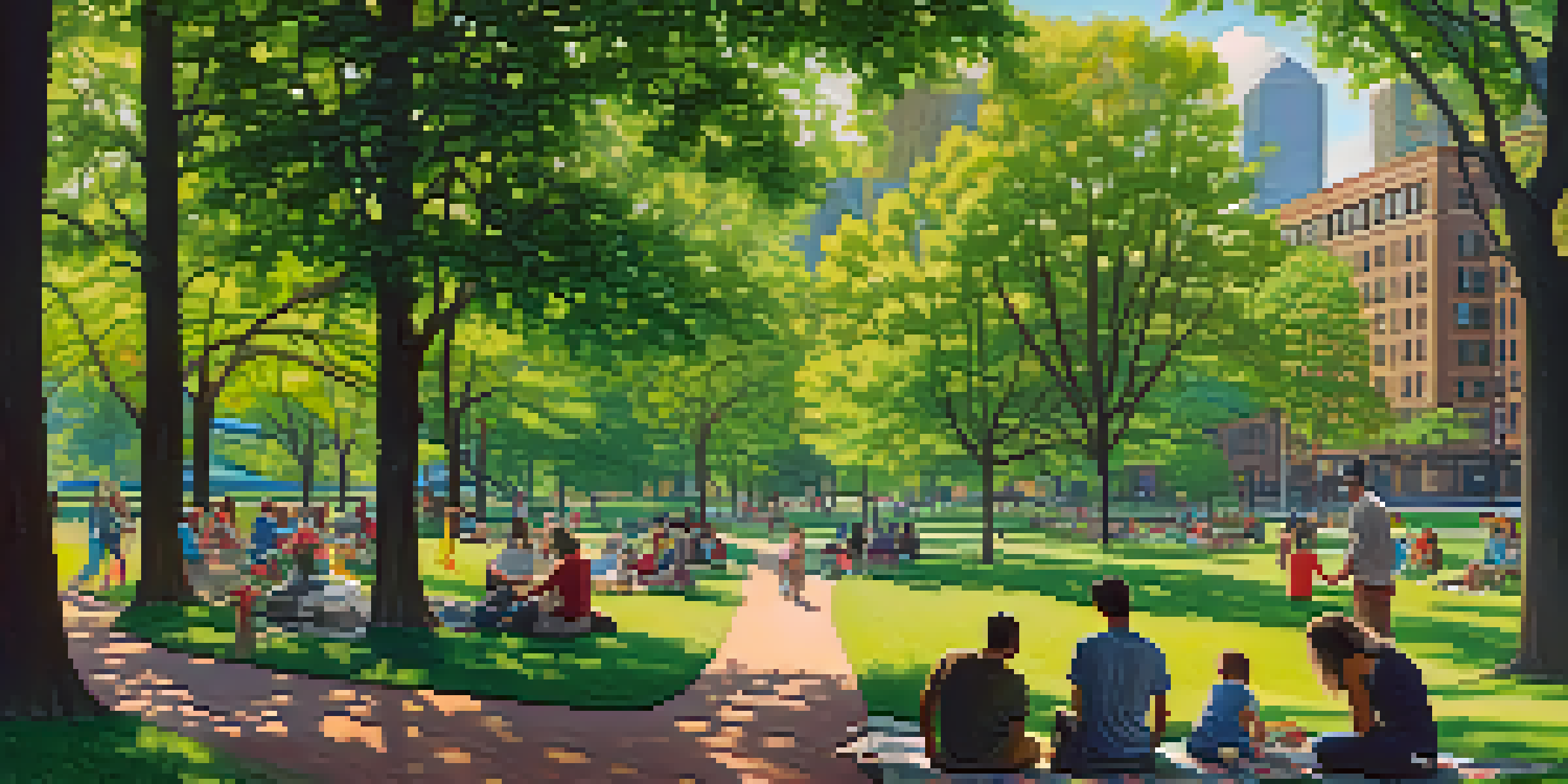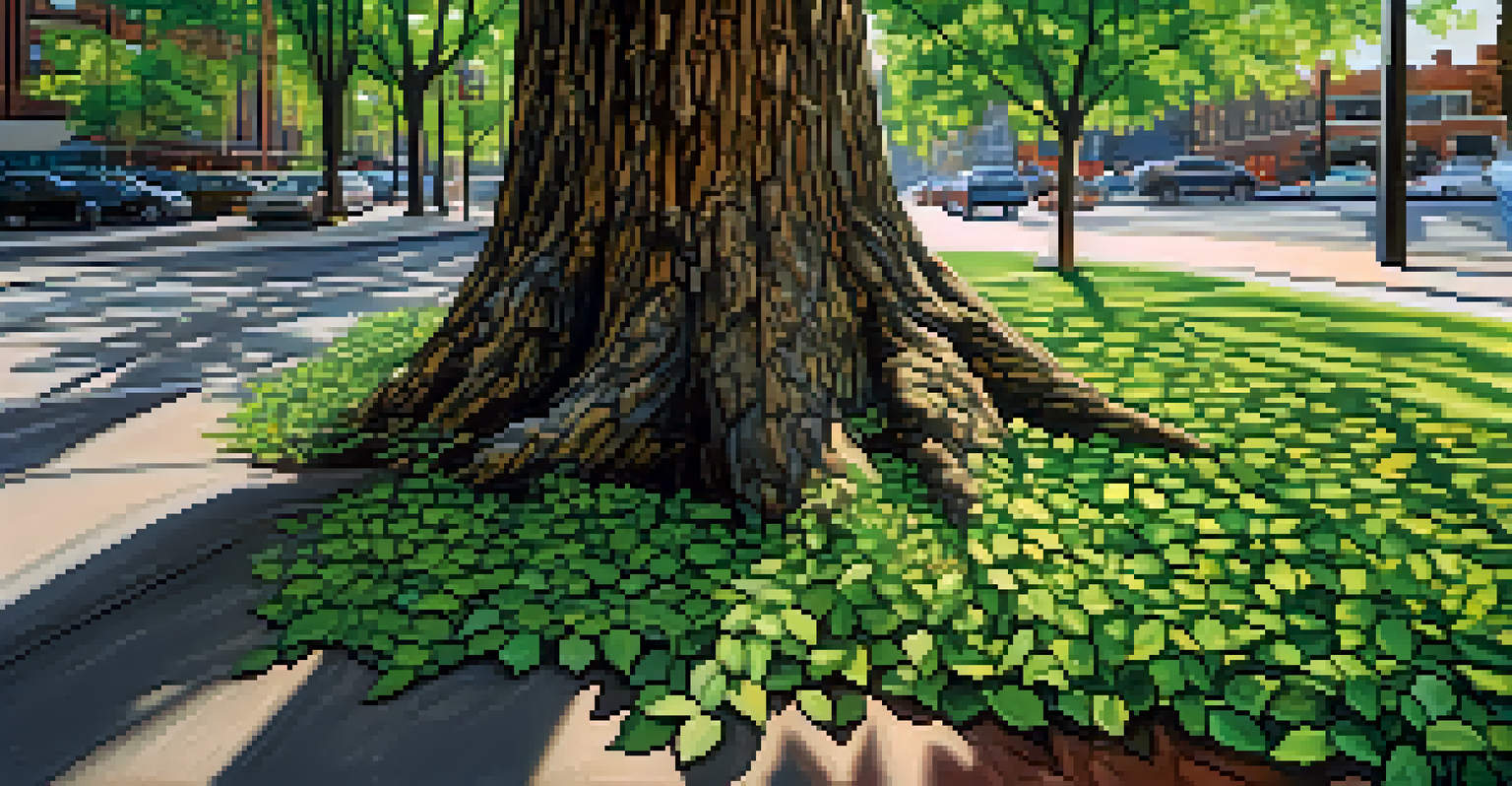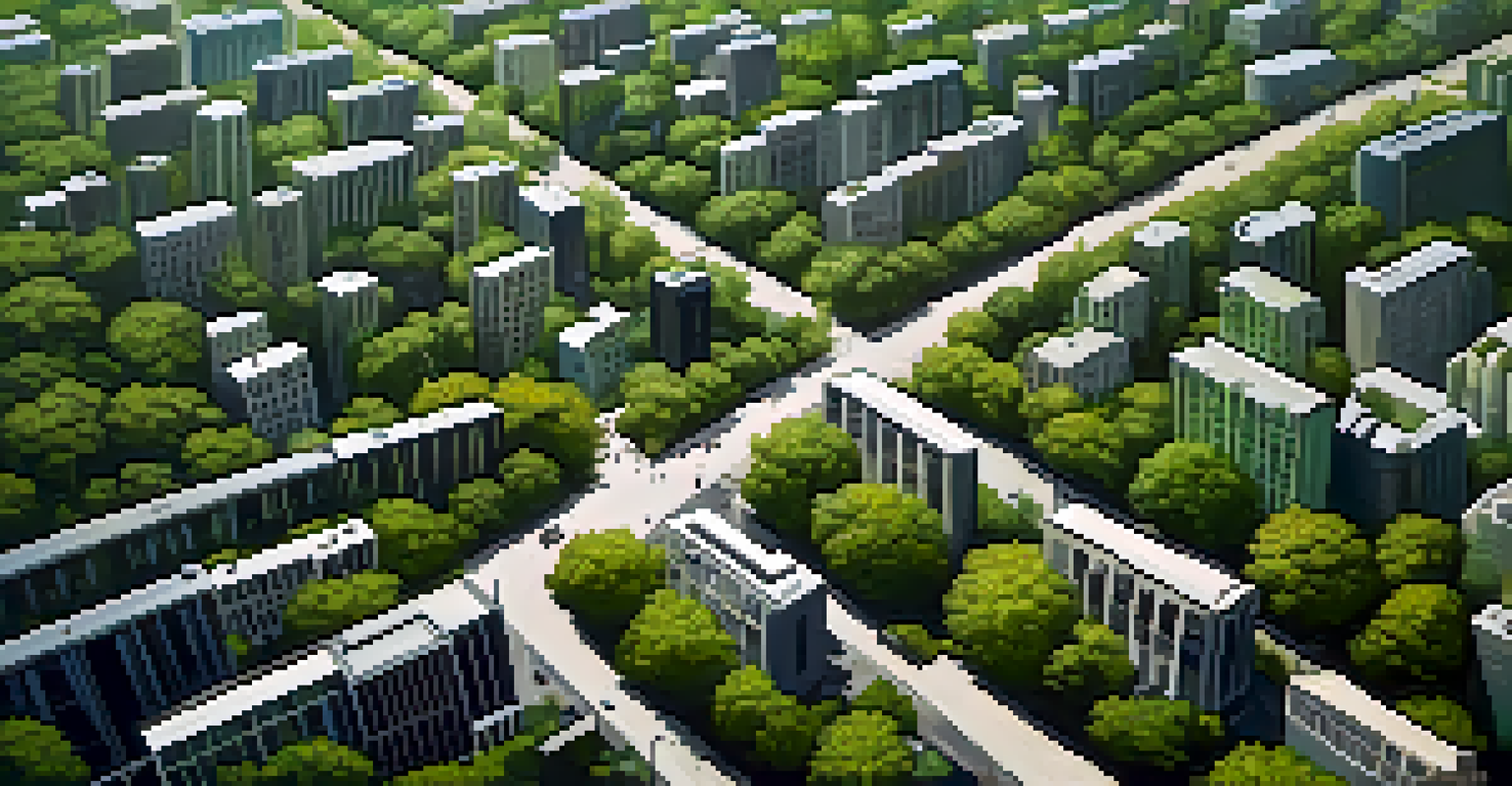Chicago's Urban Forests: Benefits and Ecological Impact

The Importance of Urban Forests in Chicago's Ecosystem
Urban forests play a crucial role in Chicago's ecosystem, acting as a green lung for the city. They provide essential services such as air purification, temperature regulation, and stormwater management. With over 3 million trees, Chicago's urban forests are vital in combating urban heat and improving overall air quality.
The best time to plant a tree was twenty years ago. The second best time is now.
These forests also offer habitats for various wildlife species, contributing to biodiversity. Birds, insects, and small mammals find refuge within these green spaces, enriching the urban landscape. In a city where concrete dominates, these pockets of greenery create a balance, allowing nature to flourish amidst urban development.
Furthermore, urban forests enhance the aesthetic appeal of the city. They provide residents and visitors with beautiful scenery and opportunities for recreation and relaxation. Parks and tree-lined streets not only improve mental well-being but also foster a sense of community and connection among residents.
The Economic Benefits of Chicago's Urban Forests
Beyond their ecological importance, urban forests significantly contribute to Chicago's economy. Trees increase property values, making neighborhoods more desirable for potential homeowners and investors. A well-maintained urban forest can lead to higher selling prices for homes, benefiting both residents and the city’s tax revenue.

Moreover, green spaces attract businesses and tourists alike. People are more likely to visit parks and outdoor areas, which can boost local businesses through increased foot traffic. This economic activity creates jobs and supports the local economy, showcasing how nature and commerce can go hand in hand.
Urban Forests Enhance City Life
Chicago's urban forests improve air quality, provide recreational spaces, and foster community connections.
Additionally, urban forests can lead to reduced energy costs for residents. Trees provide shade during the hot summer months, decreasing the need for air conditioning. This not only saves money on utility bills but also reduces the overall energy demand, making Chicago a more sustainable city.
Enhancing Air Quality Through Urban Forestry
One of the most significant benefits of urban forests is their ability to improve air quality. Trees absorb carbon dioxide and release oxygen, which is essential for human health. In a bustling city like Chicago, where pollution levels can be high, the presence of trees helps mitigate these effects.
Trees are the earth's endless effort to speak to the listening heaven.
Moreover, urban trees capture pollutants such as sulfur dioxide, ammonia, and nitrogen oxides, acting as natural air filters. By trapping dust, pollen, and smoke, they contribute to cleaner air, benefiting both residents and the environment. This is especially important for vulnerable populations, including children and the elderly, who may suffer from respiratory issues.
Furthermore, the cooling effect of urban forests helps to lower temperatures in densely populated areas. By reducing the urban heat island effect, trees make the city more livable during scorching summer months. Cleaner air and cooler temperatures create a healthier urban environment for everyone.
Urban Forests and Climate Change Mitigation
As climate change continues to pose significant challenges, urban forests can play a pivotal role in mitigation efforts. Trees sequester carbon, absorbing it from the atmosphere and storing it in their biomass. This process helps reduce greenhouse gas concentrations, making urban forests a critical ally in combating climate change.
In addition to carbon sequestration, urban forests can help manage stormwater runoff. They absorb rainfall, reducing the risk of flooding and improving water quality by filtering pollutants. This natural approach to stormwater management is increasingly important as cities face more frequent and intense rainfall due to climate change.
Economic Growth Through Green Spaces
The presence of trees in Chicago boosts property values, attracts businesses, and reduces energy costs for residents.
Moreover, urban forests enhance resilience to climate impacts. By providing shade and cooling effects, they help cities adapt to rising temperatures. A well-planned urban forest can buffer the effects of climate change, making cities like Chicago more sustainable and livable for future generations.
Community Engagement in Urban Forestry Initiatives
Community engagement is vital for the success of urban forestry initiatives in Chicago. Local residents are often the best advocates for their neighborhoods, and their involvement can lead to more effective management of urban forests. Programs that encourage tree planting and maintenance foster a sense of ownership and responsibility among community members.
Moreover, educational initiatives can raise awareness about the importance of urban forests. Workshops and events can teach residents about tree care, the ecological benefits of urban greenery, and ways to get involved. Engaging the community ensures that urban forests are valued and protected for years to come.
Partnerships between local organizations, schools, and government agencies can also enhance urban forestry efforts. Collaborative projects can lead to increased funding, resources, and support for maintaining and expanding Chicago's green spaces. Together, these efforts can result in healthier, more vibrant urban forests that benefit everyone.
Challenges Facing Chicago's Urban Forests
Despite their many benefits, Chicago's urban forests face several challenges. One significant issue is the threat of invasive species, which can outcompete native trees and disrupt local ecosystems. Managing these invasives requires ongoing effort and resources to protect the integrity of the urban forest.
Additionally, climate change poses a serious risk to urban trees. Extreme weather events, such as heavy storms and prolonged droughts, can weaken or kill trees. Adapting urban forestry practices to meet these challenges is essential for preserving the health of Chicago's green spaces.
Community Engagement is Key
Active participation from residents in urban forestry initiatives ensures the sustainability and health of Chicago's green spaces.
Finally, funding and resources for urban forestry programs can be limited. Many cities struggle to allocate budgets for tree planting, maintenance, and education. Advocacy and community support are crucial to ensuring that urban forests receive the attention and care they need to thrive.
Future of Urban Forests in Chicago
The future of urban forests in Chicago looks promising, thanks to ongoing efforts from city officials, environmental organizations, and community members. Initiatives aimed at increasing tree canopy cover and enhancing biodiversity are being prioritized. These efforts are crucial in ensuring that urban forests continue to thrive and provide their many benefits.
Innovative practices, such as planting more diverse species and utilizing green infrastructure, are also being explored. By adapting to challenges like climate change and urban development, Chicago can create a more resilient urban forest. This will ensure that the city remains a green, vibrant place to live for generations to come.

Ultimately, the success of these initiatives relies on continued community engagement and support. By working together, residents can help shape the future of Chicago's urban forests, ensuring they remain a valuable asset to the city. The collaboration between the community and local authorities will be vital in fostering a sustainable urban environment.